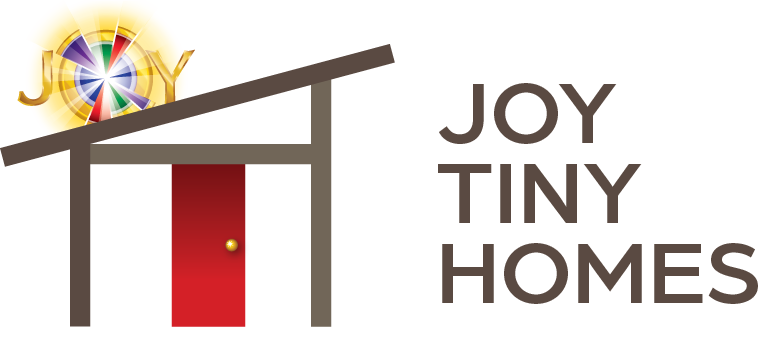Notes from Joy Tiny Home designer Jeanette Joy Fisher, DPP
The philosophy of Joy to the Home flows through our tiny homes. Living in a tiny home should never feel compromised.

Design Psychology principles of our parent company Joy to the Home flow through our tiny homes. Small structures encourage sustainability, organization, and the joy of minimalism. Our homes are a bit larger than many tiny houses because we build to our design standards. Living in a tiny home should always feel wonderful!
Starting in 1985, I researched home design and happiness. I called my discovery Design Psychology because the results were nothing like what I learned from interior design classes. Traditional interior design seems to decorate for status and not individual emotional support. Here are some Design Psychology principles behind Joy Tiny Homes for emotional nourishment.
Living a happy life depends upon feeling great about your home environment. This premise means knowing you’re not selfishly harming the environment, depriving yourself, or making a design blunder.
Space: Human-scale dictates rooms large enough not to feel like you’re living in a closet. Also, Joy Tiny Homes don’t have lofts requiring one to crawl to bed, far away from the bathroom. Limiting a home to 8’ wide doesn’t provide enough area for a room and a hallway. Adding a couple of feet takes away the cramped feeling. We build homes to carry one wall at a time through small side yards. This building method means Joy Tiny Homes are wider than 8’. Plus, our tiny houses get installed without pricey cranes.
Light: Joy to the Home’s trade secrets stem from findings that color psychology pales in significance to lighting psychology. Design Psychology Pro students sign a non-disclosure. Rest assured, Joy Tiny Homes include the results of years of lighting research.
Colors: Most people enjoy their favorite colors. I ask women to select their preferred outfits and hang them facing out for a photo. When we share these specific colors, we determine which colors suit the spaces. You want to look good in your surroundings, so you feel good. We also deep dive into your specific activities needing emotional sustenance. For instance, writers’ needs vary from desiring more creativity versus productivity organization.
Patterns: Like colors, patterns help or hinder creativity and productivity. Nature-based patterns add serenity instead of geometric motives, which increase uneasiness.
Texture: You don’t need to touch silk or velvet to feel softness and luxury. Layers of texture add interest and make you feel pampered.
Space, Light, Color, Pattern, and Texture comprise the main Design Psychology ingredients. All these principles become more significant in smaller spaces. Repeating ornaments influences emotions and impacts the subtle design elements.
Most designers agree with this premise: Balancing these design elements is vital to every design scheme.
I love the word scheme. Let’s plot a design scheme together for your Home for happiness. Living in a tiny house means you need to get the design right from the start. Let’s add the spice of life — JOY! to your home.
If you’re buying a tiny home for a Backyard Home, an ADU (Accessory Dwelling Unit) and need Design Psychology help for your main house, I’ll give you free advice by FaceTime. I won’t explain the design principles, but I’ll give you my professional opinions. Sometimes, a slight change makes a huge difference. See JoyADU.com
See DesignPsychologyPro.com for a new career or a professional enhancement.
